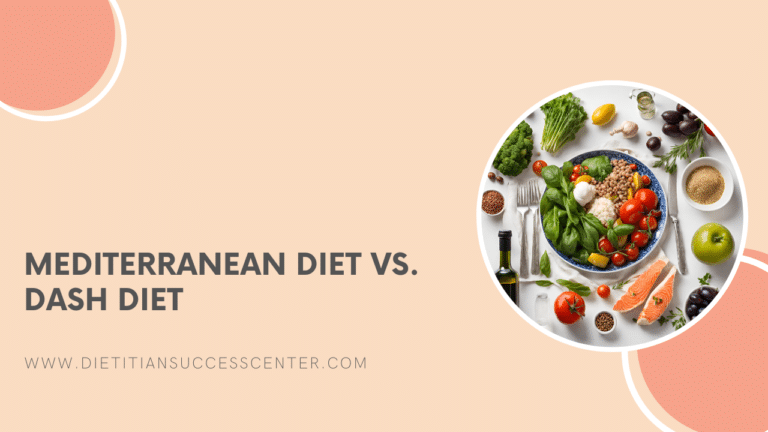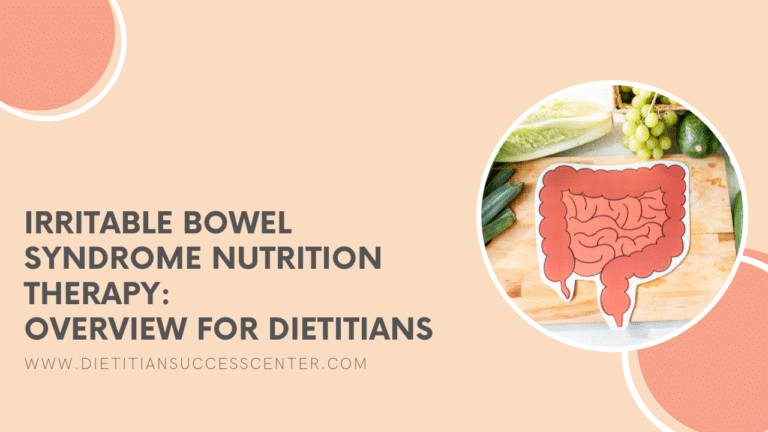

Written by Olivia Farrow, RD, MHSc
Reviewed by Krista Kolodziejzyk, RD, MPH, MBA
In this article, we review the issue surrounding heavy metals in chocolate, specifically lead and cadmium in dark chocolate, in response to a Consumer Reports article published in December 2022.
Heavy Metals In Chocolate in the News
In December 2022, a Consumer Reports article was published outlining findings of heavy metals (lead and cadmium) in household chocolate brands like Hershey’s, Trader Joes and others. The report has been picked up & shared by a number of major news outlets. Consequently, clients or patients might be asking their health professional what’s fact vs. fiction with regards to contamination of heavy metals in chocolate.
First, aren’t there some health benefits of dark chocolate?
Edible chocolate is made from the cacao bean through a series of steps, including fermentation, roasting, grinding, and adding other ingredients (1).
Dark chocolate has a higher percentage of cocoa solids than lighter chocolates like milk or white chocolate (2). With 35-80% of the total weight from cocoa solids, dark chocolate contains more of the nutrients available in cacao than in lighter forms, potentially associating it with greater health benefits (2,3). These nutrients include flavonoids (polyphenol antioxidant compounds), theobromine (a blood pressure reducer), and minerals like iron, zinc, and magnesium (2).
Some studies available suggest that dark chocolate consumption could have beneficial effects on blood pressure, cardiovascular disease risk, and cognitive function (2, 4, 5, 6). However, a 2021 systematic review found chocolate consumption had no significant effect on health parameters, so there’s still opportunity for more high quality studies here to make definitive conclusions (7).
Chocolate is a lifestyle and cultural staple. Even though research on the health benefits is lacking, it is still an important dietary component for many and can still be included in a healthy diet.
Cadmium and Lead Contamination in Chocolate
Cadmium and lead are heavy metals naturally found in the environment and can accumulate in soil from industrial processes (8,9).
Exposure to cadmium can impact the kidneys, lungs, and GI tract, and is considered carcinogenic (8,9).
Very high levels of lead exposure can cause lead poisoning, which can impact all body systems, including brain damage, and can be fatal (10,11). Lead contamination at lower levels is a risk for infants, children, and pregnant persons. It can impact behavior, intelligence, and fertility. Lead is also considered a carcinogen. Overall, environmental exposure to lead has declined since no longer being used in paint, gasoline, and food manufacturing (10,11).
Cadmium, lead, and other heavy metals may be present in many foods but usually at levels low enough that moderate consumption for most adults is considered safe (11). Cadmium can end up in chocolate from cacao trees grown in contaminated soils and lead from drying sticky cacao beans on the side of the road, where they can become contaminated by environmental lead pollution (3,12).
Because of the higher quantity of cocoa solids in dark chocolate, it is the one under the microscope here.
How much cadmium and lead are we talking about here?
A recent, highly publicized Consumer Report analyzed the cadmium and lead quantities in 28 brands of dark chocolate and compared these to Californian maximum allowable dose levels (13,14).
- 0.5 mcg per day for lead
- 4.1 mcg per day for cadmium
Note that California tends to have stricter regulations for health contaminants than in other parts of the United States (14).
For reference, the FDA recommends levels of lead in candy likely to be consumed by children to contain less than 0.1 mg per kg of candy weight (15) and total daily intake from food at a maximum level of (16):
- 2.2 mcg per day for children
- 8.8 mcg per day for women of childbearing age
- 12.5 mcg per day for other adults
The European Union recommends levels of cadmium in dark chocolate to be lower than 0.30-0.80 mg/kg of chocolate (or approximately 0.5-22 mcg/ounce), with the higher level representing darker chocolates with a higher percentage of cocoa solids (17).
In the Consumer Reports article, the highest lead found in one ounce of dark chocolate was 143% of the Californian maximum allowable dose level (about 0.85 mcg/oz of chocolate) and the highest level of cadmium at 229% (about 9.3 mcg/oz of chocolate) (13,14). However, serving size is important here, keep in mind that 1 ounce of dark chocolate is around 30g, or 1/3 of a typical chocolate bar (many standard size chocolate bars are around 100g), sticking to one square would keep levels of cadmium and lead lower.
A 2018 convenience sample of 144 chocolate products in the US market found lead levels of dark chocolate at an average of 0.03 mg/kg chocolate (0.85 mcg/oz) and cadmium at an average of 0.27 mg/kg (7.65 mcg/oz) and were, as expected, correlated with the percent of cocoa solids in the chocolate product (3). Notably, they also found samples from South American chocolate higher in cadmium than those from Africa (3).
A 2022 investigation report by As You Sow, a Californian nonprofit focused on corporate responsibility, published a report of their tests of cadmium and lead contents in chocolate and recommendations to corporations to reduce their quantities (12). Their report found that cadmium contamination mostly came from contaminated soil and lead contamination from roadside drying of cacao beans (12). They provide several recommendations for mitigating soil contamination, including improving agriculture practices, sourcing cacao from areas with lower soil cadmium, blending high and low cadmium source beans, and avoiding roadside drying of cacao beans(12).
So What Does This All Mean?
Dark chocolate is often recommended for its flavonoid content and health benefits, the latter of which is yet to be supported by high-quality literature according to a 2021 systematic review (7).
There is a higher content of heavy metal contaminants of the cacao bean in dark chocolate, due to the higher percentage of cocoa solids in darker forms of chocolate.
Lead and cadmium contamination has been found in chocolate. These levels are significantly higher than the Californian maximum allowable dose levels, but within the FDA-recommended maximum lead in candy likely to be consumed by children, and European Union recommendations for maximum cadmium in dark chocolates.
Key Messages for Dietitians
Dietitians can help support the public in making healthy, evidence-based choices about chocolate. Here are some suggestions:
- Reinforce the idea that there is no need to demonize specific foods, and that all foods can fit within a healthy diet.
- If an individual is not a dark chocolate eater already, it doesn’t need to be added to the diet for health benefits, as the evidence is still unclear on whether it has any substantial impact on health (7).
- As with many other food products that may be contaminated with heavy metals, moderation is key. These levels found in one ounce of dark chocolate are higher than the Californian maximum allowable dose levels, but within the FDA-recommended maximum lead in candy likely to be consumed by children, and European Union recommendations for maximum cadmium in dark chocolates. Keep in mind that 1 ounce of dark chocolate is around 30g, or 1/3 of a typical chocolate bar (many standard size chocolate bars are around 100g), so sticking to one square would keep levels of cadmium and lead lower.
- To stay on the side of caution, pregnant persons and young children can choose to avoid dark chocolate with a high percentage of cocoa solids or eat it in small amounts, such as 1 square or less per day. Although it would be challenging to find chocolate without lead and cadmium, definitively, there are “better” options listed in the Consumer Reports article.
- Dietitians can help support advocacy efforts to improve agricultural practices and reduce the contamination of soil and chocolate.
- For clients who are overly concerned about heavy metal contaminants in their beloved dark chocolate, they may choose to only eat those brands found to be lower in lead and cadmium by the Consumer Reports article, or choose to eat a wide variety of brands with varying cocoa solid percentages and geographic origins.
- The Consumer Reports article also advises eating a balanced diet with flavonoids from various sources. Of course, dietitians are in a great position to be helping people to achieve this goal!
Looking for more evidence summaries for Registered Dietitians and nutrition practitioners? Dietitian Success Center is home to hundreds of online courses, ready-to-use client handouts, and practitioner resources designed to save you time while expanding your skills & knowledge. Become a DSC member today to access all of our toolkits and learn more about celiac disease, polycystic ovary syndrome, enteral nutrition, and many more nutrition topics!
References
-
- Tan TYC, Lim XY, Yeo JHH, Lee SWH, Lai NM. The Health Effects of Chocolate and Cocoa: A Systematic Review. Nutrients. 2021 Aug 24;13(9):2909. doi: 10.3390/nu13092909. PMID: 34578786; PMCID: PMC8470865.
- Montagna MT, Diella G, Triggiano F, Caponio GR, De Giglio O, Caggiano G, Di Ciaula A, Portincasa P. Chocolate, “Food of the Gods”: History, Science, and Human Health. Int J Environ Res Public Health. 2019 Dec 6;16(24):4960. doi: 10.3390/ijerph16244960. PMID: 31817669; PMCID: PMC6950163.
-
- Abt, Eileen et al. “Cadmium and lead in cocoa powder and chocolate products in the US Market.” Food additives & contaminants. Part B, Surveillance vol. 11,2 (2018): 92-102. doi:10.1080/19393210.2017.1420700
-
- Higginbotham, Erin, and Pam R Taub. “Cardiovascular Benefits of Dark Chocolate?.” Current treatment options in cardiovascular medicine vol. 17,12 (2015): 54. doi:10.1007/s11936-015-0419-5
-
- Katz, David L et al. “Cocoa and chocolate in human health and disease.” Antioxidants & redox signaling vol. 15,10 (2011): 2779-811. doi:10.1089/ars.2010.3697
-
- Mastroiacovo, Daniela et al. “Cocoa flavanol consumption improves cognitive function, blood pressure control, and metabolic profile in elderly subjects: the Cocoa, Cognition, and Aging (CoCoA) Study–a randomized controlled trial.” The American journal of clinical nutrition vol. 101,3 (2015): 538-48. doi:10.3945/ajcn.114.092189
-
- Tan TYC, Lim XY, Yeo JHH, Lee SWH, Lai NM. The Health Effects of Chocolate and Cocoa: A Systematic Review. Nutrients. 2021 Aug 24;13(9):2909. doi: 10.3390/nu13092909. PMID: 34578786; PMCID: PMC8470865.
-
- Health Canada. Cadmium in Canadians. Government of Canada. 2021. Available from https://www.canada.ca/en/health-canada/services/environmental-workplace-health/reports-publications/environmental-contaminants/human-biomonitoring-resources/cadmium-canadians.html?fbclid=IwAR1LXkvy_fpPErlZWaNhFsWr9UaKudMeFqT395Jzhz54PI3WQUq1m8B7_A8
-
- US FDA. Environmental Contaminants in Food. (n.d). Available from https://www.fda.gov/food/chemical-contaminants-pesticides/environmental-contaminants-food
-
- Centers for Disease Control and Prevention. Lead: Health Problems Caused by Lead. National Institute for Occupational Safety and Health. 2021. Available from https://www.cdc.gov/niosh/topics/lead/health.html
-
- Health Canada. Lead in Food. Government of Canada. 2020. Available from https://www.canada.ca/en/health-canada/services/food-nutrition/food-safety/chemical-contaminants/environmental-contaminants/lead.html
-
- Ahn, Chaney, DiBartolomeis, Ramtahal. Expert Investigation Related to Cocoa and Chocolate Products. As You Sow. 2022. Available from https://www.asyousow.org/reports/expert-investigation-related-to-cocoa-and-chocolate
-
- Loria, Kevin. Lead and Cadmium Could Be in Your Dark Chocolate. Consumer Reports. 2022. Available from https://www.consumerreports.org/health/food-safety/lead-and-cadmium-in-dark-chocolate-a8480295550/?fbclid=IwAR0JKu6iXhouUOAnbxuYSxton6_KW2p4zX3jmTAeC06GZACXypHk6ihFTRM
-
- California Office of Environmental Health Hazard Assessment. Proposition 65 No Significant Risk Levels (NSRLs) and Maximum Allowable Dose Levels (MADLs). 2021. Available from https://oehha.ca.gov/proposition-65/general-info/current-proposition-65-no-significant-risk-levels-nsrls-maximum
-
- US FDA. Guidance for Industry: Lead in Candy Likely To Be Consumed Frequently by Small Children. 2006. Available from https://www.fda.gov/regulatory-information/search-fda-guidance-documents/guidance-industry-lead-candy-likely-be-consumed-frequently-small-children#ftn2
-
- US FDA. Lead in Food, Foodwares, and Dietary Supplements. (n.d.) Available from https://www.fda.gov/food/environmental-contaminants-food/lead-food-foodwares-and-dietary-supplements
-
- European Comission. Cadmium in Chocolate. 2019. Available from https://food.ec.europa.eu/system/files/2019-03/cs_contaminants_catalogue_cadmium_chocolate_en.pdf








